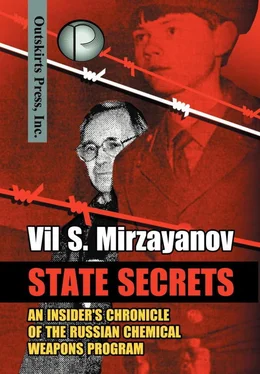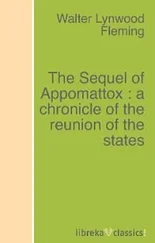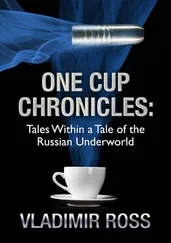F
D
CH 3O-P=O Agent A-232
\
N=C(CH 3)-N(C 2H 5) 2
F
D
C 2H 5O-P=O Agent A-234
\
N=C(CH 3)-N(C 2H 5) 2
The agent A-232 has the same toxicity as Substance 33, though it is much more volatile than Substance 33 and agent A-230. Its stability against moisture is lower than both these agents. Kirpichev synthesized and tested the ethoxy-analog of agent A-234 and ultra highly toxic solid derivatives of agent A-230 and A-232 where the amidin radical was replaced by a guanidine radical. Their codenames are A-242 and A-262, respectively:
F
D
CH 3-P=O Agent A-242
\
N=C-N(R) 2, where R – diethyl radical
\
N(R) 2
F
D
CH 3O-P=O Agent A-262
\
N=C-N(R) 2, where R – diethyl radical
\
N(R) 2
At this point jealous Director Martynov decided that enough was enough, and he deprived Petr Kirpichev of the authorship for agent A-232. At that time Petr had to send all materials directly to GOSNIIOKhT, without leaving any copies in the local secret archives or library, so Martynov and his crooks did what they wanted with them. Superman Martynov “presented” this agent to his son Boris Martynov, who had already become chief of Gladshtein’s former laboratory. Boris was dreaming about his PhD. Up to that time Ivan Martynov was a Corresponding member of Academy of Sciences of the USSR, and Victor Petrunin the new director of GOSNIIOKhT was keeping an eye on him, hoping that his former boss would help him also become a member of Academy.
For that reason Director Victor Petrunin became enraged in 1987, when Petr Kirpichev had the audacity to submit his proposal about his doctoral dissertation, based on his work to the Science Council at GOSNIIOKhT. Petrunin told him that no single person in Russia would allow him to write such a secret dissertation. (This was a pure lie). “You’d better ask for my advice first” concluded the director. Ironically, this was Kirpichev’s ultimate reward by his country, for inventing a principal new class of chemical agents. Not one of the so called leading scientists of GOSNIIOKhT raised his voice in support of this really talented scientist.
It wasn’t a matter of dissidence or politics which could endanger their lives. This was a clear demonstration of the real moral cores of these people. They were interested only in their own careers and nothing more. To tell the truth, practically all of them were no longer real scientists. They were simply survivors.
At this time I met Petr near my office in the corridor of 6 thfloor of the Administrative Building, when he came out of meeting with Petrunin. He told me that he was officially pressured to give up his authorship in favor of Martynov’s son but he had refused. This was followed by Petrunin’s tirade. Petr was smoking cigarette after cigarette and said: “They are miserable people! They think that a PhD is the ultimate goal of life. They do not understand that there is also human pride and honor. I cannot sell my honor for a PhD.”
Theft of professional work by a person or group of people was not entirely uncommon and sometimes routine behind the scenes maneuvers were going on between GOSNIIOKhT and UNKhV.
In the late 1970s, in order move the effort forward, GOSNIIOKhT Director Grigory Patrushev established an interagency commission to oversee the final medical-biological and laboratory tests of A-230. In addition to GOSNIIOKhT personnel, officials from the Directorate of the Chief of Chemical Troops, the Military Academy of Chemical Defense, and Military Unit 61469 observed these tests, which were conducted in the fall of 1981. I was working in the Physical Chemistry Department at that time. Samples were delivered from the test chambers to my laboratory, where I used GC methods to analyze the laboratory tests which explored the fundamental properties of A-230. I did the same type of analysis for the animal testing of A-230. These observers were literally breathing down my neck as I processed the samples through my equipment and calculated the concentration of A-230 present in each sample. The test results showed that A-230 was 5 to 8 times more lethal than Substance 33 and would be an effective chemical agent.
All signs pointed to a success in the making until the initial field tests of A-230 were conducted at Nukus in Kara-Kalpakia, Uzbekistan, since they were not so impressive. [36] The tests could have gone very well, but the old cholinesterase method of analysis that the scientists at Nukus used did not allow the results to be interpreted accurately.
At that point, a decision was made to conduct field tests on A-230 under joint GOSNIIOKhT-Army supervision. A special laboratory headed by Yevgeni Bogomazov [37] Read about his “discovery” in Chap. 9.
from Department RP was created to perform GC analysis of the field test samples. The analysis was done at Nukus, running between 300 and 500 samples over the period of a few days. Some of my laboratory assistants participated in this work, and one of my graduate students, Valerij Djuzhev-Maltsev, developed the GC method of analysis that was employed.
The results were so good that the military dropped their objections. Bogomazov also staged a round of live agent field tests with A-230 at Nukus in 1986 and 1987 using bombs and rockets. [38] Modeling was used to see how the agent would perform with other types of delivery systems.
The successful completion of these tests led to two important events. The first was a victory celebration at a 1987 party meeting in our institute. There, Director Victor Petrunin announced that GOSNIIOKhT had achieved the type of sensational accomplishment that only happened once every forty years, namely the discovery of an entirely new weapon, A-230. The second hallmark event came with the Soviet Army’s official approval in 1990 of A-230 as an agent that could be used in all types of munitions. After that, the production of experimental quantities of agent A-230 began at GOSNIIOKhT’s Volsk and Volgograd branches, and plans were drawn up for the full-scale production of A-230. Designs were prepared, and the ground was cleared for construction to begin on a huge new chemical weapons production factory in Pavlodar, Kazakhstan. With the collapse of the Soviet Union, the funding for a dedicated A-230 production facility evaporated, and Kazakhstan became an independent nation. [39] The factory design was completed by NII Khimproject in Volgograd. GOSNIIOKhT deputy director Guskov told me about the planned move of A-230 production to Pavlodar, where a commercial chemical plant was already located. At that time, sarin and soman were being produced at the Volgograd plant, which is in a city. Decisions had been made to move chemical weapons production operations to this more remote location. Not only were multiple agents to be produced at Pavlodar, but also the plant’s production capability was to exceed that of Novocheboksarsk. For more on the Pavlodar plant, see Gulbarshyn Bozheyeva, “The Pavlodar Chemical Weapons Plant in Kazakhstan: History and Legacy,” Nonproliferation Review 7, no. 2 (Summer 2000): 136-45.
Since my graduate students and I had developed the GC analysis, my graduate students were also involved with conducting the toxicity and medical biological tests at both locations. Our analytical methods were also employed during the field tests of A-232 at the Shikhany test site. Though the A-232 research was by no means a central focus of my research at that time, I occasionally saw reports that kept me abreast of this agent’s development. A-232 was developed and tested in parallel with, though a little later than, A-230.
Читать дальше












